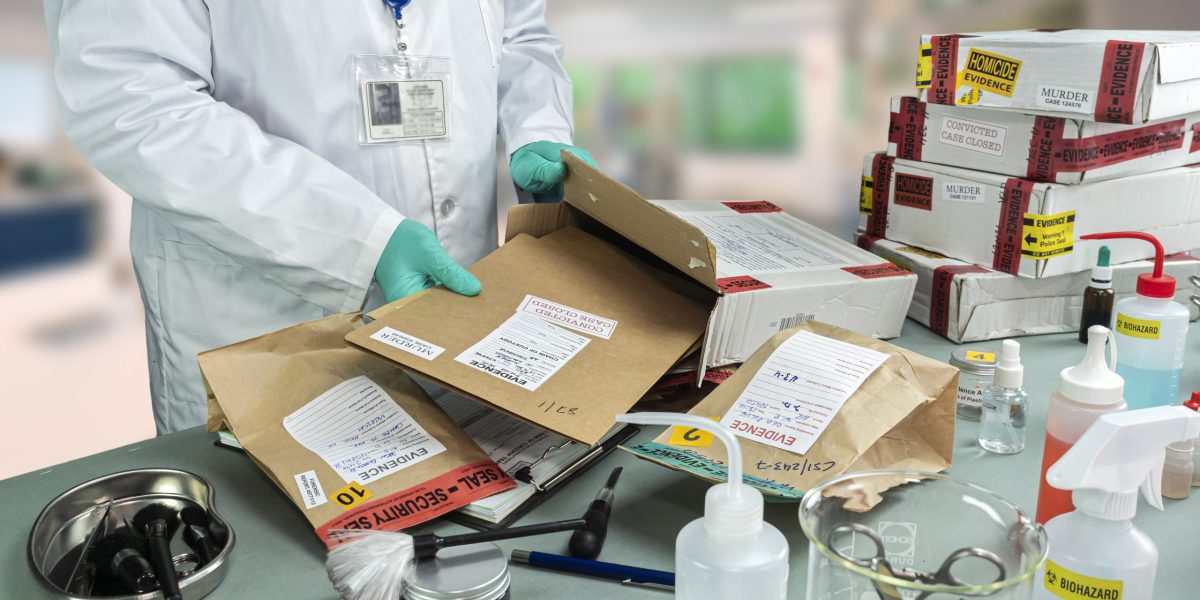In today’s healthcare landscape, timely and secure transport of biological specimens, diagnostic materials, and medical devices is absolutely critical. Any delay, breach in temperature control, or chain-of-custody error can compromise test results, patient diagnoses, research trials, and even lives. That is why lab logistics courier specialized for the medical industry are not just “nice-to-have” — they are mission-critical.
This article explains in depth how a medical-industry courier works: what makes it different, what features are essential, how a provider like “Lab Logistics” might structure its operations, and how to choose the right partner in this vertical. Whether you’re running a diagnostic laboratory, hospital lab, biotech company, or research facility, this guide will give you clarity and insight into the world of lab logistics medical courier.
Why Courier Services Matter in the Medical & Laboratory Industry
- Time sensitivity: Many lab specimens (blood, tissue, serum, microbial cultures) degrade over time. The faster a sample gets to the testing facility, the higher the integrity of the data.
- Temperature sensitivity: Some analytes or reagents must be held at specific temperatures (ambient, chilled, frozen). Deviations can render them invalid.
- Chain-of-custody & compliance: Labs must adhere to regulatory requirements (e.g. HIPAA for patient data, biosafety, biohazard rules, CLIA guidelines) to ensure specimen security, patient confidentiality, and legal compliance.
- Risk & liability: Misrouting, wrong handling, breakage, or contamination can lead to financial, reputational, or even legal consequences.
- Operational efficiency: Specialized courier services can reduce internal burden, standardize processes, and provide better visibility and reporting.
- Scalability & flexibility: As labs grow or as demand fluctuates (e.g. seasonal testing surges, pandemics, new trials), having a dependable logistics partner is crucial.
Because of these factors, many labs partner with dedicated medical courier services rather than relying on general parcel or freight carriers.
Unique Challenges in Medical & Lab Courier Logistics
Let’s highlight some of the key complexities that differentiate medical courier services from standard logistics:
- Multiple temperature zones: Some shipments require ambient (room temperature), refrigerated (2–8°C), frozen (−20°C or −80°C), or even cryogenic conditions.
- Short turnaround windows: Some diagnostics have deadlines (e.g. STAT labs, same-day results).
- Regulatory oversight: Handling biohazards, infectious materials, or sensitive patient data requires adhering to regulatory guidelines (OSHA, DOT, IATA, local health authorities).
- Chain-of-custody & security: Ensuring sample integrity means every transfer must be logged, and tamper-evident packaging may be needed.
- Fragility & sensitivity: Specimens, reagents, or diagnostic equipment may be delicate or sensitive to shock/vibration.
- Volume variability & routing constraints: Labs may have many collection points (hospitals, clinics, phlebotomy sites) feeding into a central lab or multiple hubs.
- Geographic constraints: Rural areas, intercity distances, traffic congestion, border crossings, and customs all add complexity.
- Data integration: Labs need APIs, portal connectivity, or EHR/LIMS integration to track, schedule, and monitor shipments.
Types of Medical Courier Services
Below is a breakdown of common service types in the medical / lab logistics domain:
Ambient / Room-Temperature Specimens
Used for many blood tests, clinical chemistry, serology, urine, and similar where specimens are stable at ~20–25 °C.
Key concerns: packaging to avoid temperature extremes, transit time minimization, avoiding direct sunlight or heating.
Refrigerated / Cold Chain Specimens
Some analytes, cells, reagents, or tests require samples held at 2–8 °C. This requires insulated packaging, cold packs, temperature monitoring.
Frozen / Deep Frozen Specimens
Biological specimens like DNA, RNA, or viral samples sometimes need −20 °C or even −80 °C. Cryogenic logistics may also be involved (liquid nitrogen, dry ice).
Hazardous / Biohazard Specimens
Certain samples (e.g. infectious agents, clinical isolates) are regulated under biohazard rules. Packaging and handling must meet biosafety, DOT, or IATA hazardous materials rules.
Clinical Trial / Research Shipment Services
Shipments related to clinical trials often cross national borders, require strict temperature control, regulatory documentation, chain-of-custody, and time-critical delivery. Providers may offer “first/last mile + integrator” models.
Medical Device & Equipment Transport
Beyond specimens, labs may need to move fragile diagnostic instruments, surgical devices, or other equipment that require white-glove handling, shock control, or special crating.
Key Features & Requirements of a Top Medical Courier
To deliver high quality service, a medical courier must satisfy multiple criteria. Below are the core capabilities to demand.
Regulatory Compliance & Certifications
- HIPAA (or local data privacy laws) for handling patient information
- OSHA / biosafety / infectious materials training
- IATA / DOT / ADR (for hazardous or bio specimens)
- CLIA / CAP / ISO affinity — alignment with lab accreditation standards
- Good Distribution Practice (GDP) for pharmaceutical materials
Temperature & Environmental Controls
- Multi-zone vehicles (ambient, chilled, frozen)
- Continuous monitoring (data loggers, real-time sensors)
- Alarm thresholds & alerts when temperature deviates
Chain of Custody & Traceability
- Tamper-evident seals
- Barcoding and scanning at each transfer
- Digital signatures / proof of delivery
- Audit trail logs
Real-time Tracking & Visibility
- GPS tracking, route visibility
- Client dashboards / portals
- Geofencing alerts and ETA notifications
lab logistics near me, for instance, emphasizes that “you see what we see” through their visibility tools.
Dedicated Routes & Drivers
- Same driver, same route to ensure consistency and accountability
- Drivers trained specifically for medical logistics
- Strict scheduling architecture to maintain predictability
Lab Logistics claims a 98.5%+ on-time rate for specimens using consistent drivers and routes.
Packaging, Labeling & Safety
- Validated packaging for temperature control
- Proper labeling (biohazard, handling instructions, identifiers)
- Secondary containment (for leaks/spills)
- Shock absorption and cushioning
Risk Management & Insurance
- Insurance for specimen loss, damage, or misrouting
- Backup routes or redundant capacity
- Escalation protocols for delays or failures
Scalability & Flexibility
- Ability to scale up for peak demand (e.g. during pandemics)
- Flexibility for ad-hoc / STAT shipments
- Modular service offerings (ambient vs cold chain, small vs large volume)
How Lab Logistics (or any provider) Structures Its Service Model
This section offers a behind-the-scenes view of how a provider might structure its operations. You can adapt this for your own “Lab Logistics” branding or your region.
Route Design & Optimization
- Hub-and-spoke vs direct routing: for dense urban networks, direct point-to-point may be efficient; for broader networks, hubs can centralize flow.
- Route balancing algorithms: minimize deadhead miles, balance load times
- Dynamic scheduling: ability to adjust for delays, traffic, last-minute pickups
Technology Stack & Integration
- Order entry / client portals: web or mobile interface for customers to schedule pickups
- Dispatch system / TMS: system to assign orders to drivers, optimize routing
- Tracking & telemetry: GPS, sensors, geofencing integration
- LIMS / EHR / API: integration so labs can push orders and pull status updates directly
Order Entry, Dispatch & Client Portal
- Clients can request pickups, schedule recurring routes, see pickup windows
- Dispatch operators receive and allocate jobs
- Automated alerts and escalation if a job is at risk
- Mobile app or driver interface for route instructions, scanning, proof-of-delivery
Data & Reporting
- KPI dashboards (on-time rate, exceptions, temperature excursions)
- Customized reporting (by client, by route, by sample type)
- Monthly or weekly insights
- Continuous improvement feedback loops
Client Onboarding & Customization
- Route studies / network analysis during onboarding
- Transition planning (e.g. migrating internal fleet to third-party courier)
- Training for client staff (packing, labeling, scheduling)
- SLAs & penalty structures
By designing the process thoughtfully, a courier provider can ensure high-quality, scalable, and data-driven service.
Benefits of Using a Dedicated Lab Logistics Courier (vs General Courier)
Using a specialized medical courier yields distinct advantages:
| Benefit | Explanation |
| Specialization & expertise | Medical couriers understand specimen stability, regulatory demands, and lab workflows |
| Higher reliability & predictability | Consistent routes and trained drivers reduce variability |
| Better visibility & traceability | Real-time data and chain-of-custody systems are typically stronger |
| Risk reduction | Fewer temperature excursions, handling errors, or compliance violations |
| Scalability | Ability to ramp up in response to surges (e.g. public health events) |
| Operational savings | Laboratories can outsource logistics, reduce internal vehicle fleet & maintenance |
| Regulatory peace-of-mind | Reduced liability since courier handles compliance, certification, and audit readiness |
Lab Logistics claims cost savings of 18–40% for clients through route optimization and tech efficiency.
Case Studies & Use Cases
Case Study: Hospital Specimen Network
A hospital with multiple outpatient clinics needed daily specimen pick-ups delivering to a central lab. The courier provider used route optimization to consolidate pickups and reduced transit times by 15%. They achieved >99% on-time for STAT labs.
Use Case: Clinical Trial Logistics
A biotech company with trial sites across multiple states needed shipment of kits, patient specimens, and backup samples across borders. The logistics partner offered hybrid first/last mile integration, temperature control, chain-of-custody, and customs-optimized documentation.
Use Case: Pandemic/Surge Demand
During COVID-19, lab logistics providers faced sudden spikes in sample volumes (PCR tests, serology). Providers that had scalable capacity and contingency planning performed better. Lab Logistics maintains that they “exceed 98.5% on-time” even under stress.
Including localized case studies from your own market (e.g. in Pakistan or South Asia) will strengthen credibility.
Tips for Choosing the Right Medical Courier Partner
When vetting potential service providers, ask these questions:
- What compliance/licensing do they hold (e.g. biohazard, IATA, local health)?
- What is their on-time performance (for STAT, non-STAT, across temperature classes)?
- Do they use dedicated routes & drivers (vs ad-hoc)?
- What visibility tools do they provide (tracking, portal, alerts)?
- How do they handle temperature excursions or delays (escalation, backup)?
- Can they integrate with your LIMS/EHR or ordering systems?
- What is their pricing model – fixed vs variable vs hybrid?
- How do they onboard new clients and transition legacy routes?
- What insurance or liability coverage do they carry?
- Can they scale (e.g. for growth or surges)?
Always ask for references, sample reports, and perhaps run a pilot period.
Common Challenges & How to Mitigate Them
| Challenge | Mitigation Strategy |
| Traffic, delays, weather | Build buffer times, dynamic routing, backup drivers |
| Temperature failures | Use high-spec monitoring, validate shipping validation, redundant cooling |
| Chain-of-custody errors | Automated scanning, audit trails, driver training |
| Specimen quality degradation | Minimize hold times, use fastest routing, validate packaging |
| Capacity overloads | Scalable workforce, surge contracts, redundant carriers |
| Data integration issues | Use modern APIs, flexibly handle multiple data formats |
| Regulatory changes | Stay current with guidelines, maintain compliance reviews |
Planning contingencies is key in this business domain.
Future Trends in Medical / Lab Courier Logistics
- IoT & advanced sensors: More real-time monitoring (humidity, vibration, CO₂, shock)
- Predictive analytics & AI routing: Smarter route optimization considering weather, traffic, historical data
- Blockchain for chain-of-custody: Immutable tracking of sample provenance
- Autonomous vehicles / drones: For remote or hard-to-reach sites
Cold-chain tech innovations: Novel phase-change materials, smart packaging - Greater integration with telehealth / point-of-care: More decentralized sampling, micro-labs
- Sustainability pressures: Lower-carbon packaging, route consolidation
Staying ahead of trends allows a courier to position itself as a forward-looking partner.
In the high-stakes world of healthcare and diagnostics, a medical courier is far more than a delivery service it is a critical bridge between patient sampling and clinical insight. Choosing a reliable, feature-rich, compliant, and scalable courier partner can directly influence test accuracy, turnaround time, operational costs, and ultimately patient outcomes.
If you’re exploring lab logistics solutions, start by defining your sample profile, temperature needs, volume patterns, and integration demands. Then vet providers against the capabilities and questions outlined here. A well-architected courier relationship can transform your lab operations.







